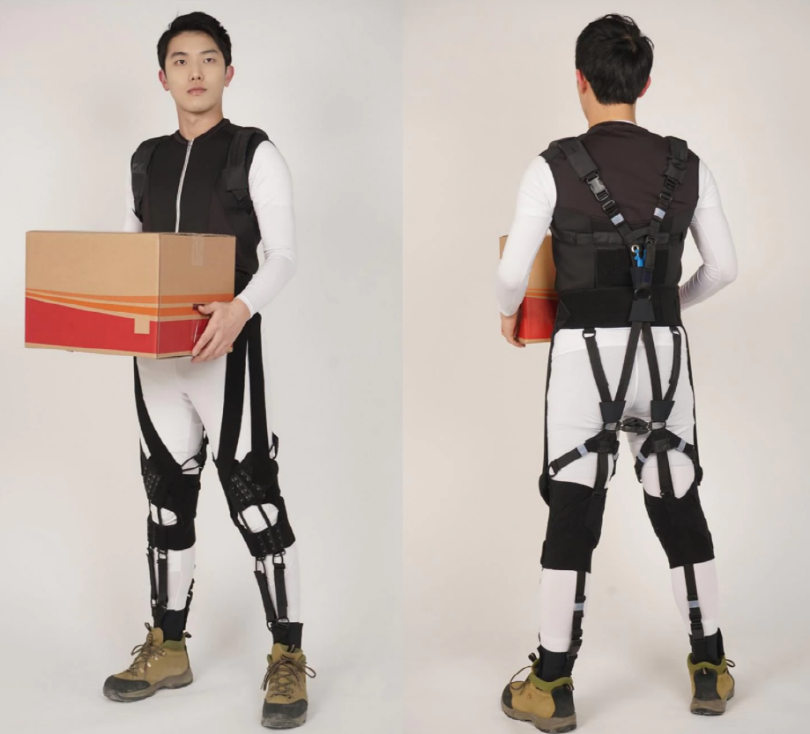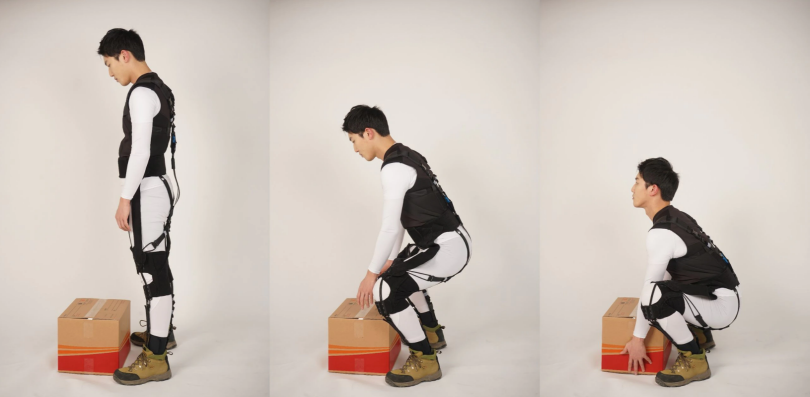Department News
[Chosun Ilbo] Prof. Kyu-Jin Cho’s Joint Research Team, Development of “squat robot” that assists muscle strength and corrects p
Author
관리자
Date
2021-08-26
Views
748
Development of “squat robot” that assists muscle strength and corrects posture
Reduces the risk of injury by distributing the load by inducing a squat position instead of bending when lifting heavy objects

A wearable robot that lifts objects with squat motion that assists muscle strength and corrects posture when lifting heavy objects has been developed in Korea.
A joint research team, led by Professor Kyu-Jin Cho of the Department of Mechanical Engineering at Seoul National University reported in the sister journal of Science, Science Robotics, the development of “squat robot” that assists muscle strength and corrects posture.
A soft-wearable robot that supports muscle strengthly when you straighten your back and lift an object in a squat motion
Robot is usually made of hard metal, but this time it is called a soft-wearable robot because it is made of strings, rubber bands, and cloth. Strings and rubber bands contract and stretch like ligaments, replacing the strength of the muscles. It weighs 850g and does not require a separate power unit.
In particular, the research team emphasized that the existing wearable robots that have been distributed to industrial sites simply support the lower back, but this robot also plays a role in correcting the working posture to lift objects in the correct posture with the back straight, the researcher emphasized. In other words, if you wear a robot to work, it induces you to do squats (lower body exercise from sitting down) instead of bending your back.

A wearable robot that lifts objects by squatting
The process is as follows. When you straighten your legs and bend your back, the soft robot loses its elasticity, acting as a kind of brake. The movement becomes unnatural. On the other hand, if you straighten your back and bend your knees, you can move with less force as the elasticity increases. When seated, the robot's rubber band stretches and energy is stored. Later, when you stand up with an object, the rubber band contracts to its original state and supports your muscles, so you can squat with less force.
Professor Kyu-Jin Cho said, "When we tested 10 people who wore robots for the first time, 9 people naturally did squats when lifting objects," adding, "It is meaningful to assist about 10% of muscle strength, but it is more effective to reduce the risk of injury by dispersing the load with proper posture induction."
The downside is that the wearable robot even interferes with bending its back to pick up small objects. The researchers said they would solve this problem by improving wearable robots in the future. Professor Professor Kyu-Jin Cho said, "In a situation where I had to work with my back bent, I turned the dial attached to the waist to lower the intensity of posture correction."
Researcher Sung-Sik Yun of Seoul National University's Human-Centered Soft Robot Technology Research Center, Professor Keewon Kim of the Department of Rehabilitation Medicine at Seoul National University Hospital, and Professor Jooeun Ahn of the Department of Physical Education at Seoul National University also participated in this study. Professor Kyu-Jin Cho said, "This technology can be developed into sports clothing that induces correct movements in the future."
Go to article
ttps://www.chosun.com/economy/science/2021/08/26/S7MR2H6FAJEPNK5EOV3IAVNGGA/?form=MY01SV&OCID=MY01SV

